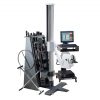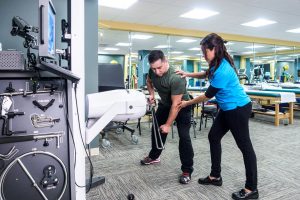
Gauging Your Clinic’s Growth Potential by Asking One Simple Question
Practice ManagementNet Promoter Score (NPS) is an effective way to measure your patients’ satisfaction. It's easy to do, and helps predict your clinic's future growth.
As a business, it’s vital to keep tabs on your customers’ impressions. With low satisfaction, chances are high they won’t continue coming back. On the other hand, if your patients have a very positive perception of your clinic, not only will they return, but with a little encouragement, they might send others your way as well.
In a recent blog post, we wrote about how to use customer testimonials to drive new patient business. Now we’re going to look at how you can gauge customer satisfaction across multiple patients and then use this data to strengthen your services and create even more raving fans.
An efficient and effective way to measure your patients’ level of satisfaction is to identify your Net Promoter Score (NPS). Business strategist Fred Reicheld created this technique in collaboration with management consulting firm Bain & Company. The beauty of NPS is in its simplicity – it’s easy for patients to participate, and it’s easy for you as a business to analyze and track. The metric can have significant value for your clinic if you can sustain the required effort and act upon the results over time.
How It Works
NPS is an index ranging from -100 to 100 that measures one specific thing: the willingness of customers to recommend your clinic’s products and services to others. Reicheld has proven that this single factor is predictive of both repurchase (or revisit) and referral. He has also found that companies that score well are more likely than lower-scoring ones to grow.
To identify where you fall on the range, ask your patients a single survey question: “On a scale of zero to 10, how likely are you to recommend this clinic to a friend or colleague?” Based on the response ratings, divide your patients into three categories: promoters, passives, and detractors.
- Promoters (sore 9-10) are your raving fans. They are loyal enthusiasts who repeatedly return to your clinic and would recommend it to others.
- Passives (score 7-8) are satisfied patients who are vulnerable to offerings by other clinics. They probably wouldn’t spread any negative word-of-mouth reviews, but they aren’t enthusiastic enough about your clinic to promote it to others. Essentially, they’re neutral.
- Detractors (score 0-6) are unhappy patients. They probably won’t return to your clinic and, even worse, they could potentially damage your reputation by spreading negative word-of-mouth reviews.
To determine your business’ NPS, add up the total number of respondents and, separately, add up the number of respondents in each category. Take this information to determine the percentage total for the promoter and detractor categories. The neutral passives are left out of the calculation. For example, if you surveyed 10 customers wherein eight are promoters and two are detractors, these category percentage totals would be 80% and 20% respectively.
Next, subtract the percentage of detractors from the percentage of promoters. This is your Net Promoter Score. In this case, 60. That is, 80% – 20% = 60. (The NPS score drops the percentage sign from the final number).
Now What?
In truth, the NPS metric means nothing unless you do something with it. The ripe opportunity here is to use this data to help you retain your most loyal patients, leverage their willingness to help you bring in new patients, and improve the experience of your passives and detractors. And here’s why this is important:
Depending on what industry you’re in, acquiring new customers is anywhere from five to 25 times more expensive than retaining existing ones. And, according to research by Reichheld and Bain, increasing customer retention by 5% can increases profits by more than 25%. Keeping the right customers/patients is valuable.
Leverage Your Promoters
Here’s another useful statistic: According to research by The Nielson Company, 84% of consumers surveyed said word-of-mouth from friends and family is the most trustworthy source of recommendation. Heed this wisdom and take full advantage of your promoters’ willingness to recommend you to their friends and family.
You can do this by offering referral incentives to these patients and by inviting them to participate in a customer testimonial campaign, as outlined in our previous post. Your NPS results should give you very clear insight as to who these raving fans are.
And if your NPS is high, don’t hesitate to use it in your marketing materials as evidence of your ability to deliver real value to your patients. There is power in being able to state, for example, that “Eight out of 10 of patients surveyed would recommend our clinic to others without hesitation.”
Improve Your Services
Your promoters aren’t your only asset in this data. Your passive and detractor ratings are equally relevant and instructive.These respondents can tell you what you should consider changing to increase patient satisfaction. If you want specifics, you’ll need to add additional questions. Two straightforward but revealing ones are “Why?,” and, “What would it take for us to raise our score just by one point?” These questions should yield insightful feedback you can use to make improvements.
Understanding Your NPS
Naturally, you might wonder what number represents a good NPS. Unfortunately, this is hard to say because the average NPS varies dramatically across industries. In retail, for example, it’s over 50, while in telecommunications, it’s below 30. For cable/satellite TV companies, it’s in the single digits.
Very generally speaking, an NPS below 0 indicates that your clinic has a lot of work to do to improve patient satisfaction; above 50 indicates you’re doing pretty well, with room for improvement; and 75 or higher means your patients are probably already telling others about you.
Tracking Your NPS
Ultimately, the number that’s good for you is the one that’s better than your own scores in the past. This is the most important benchmark. Measure your NPS over time to see if it’s worsening, remaining the same, or improving.
To do this, you’ll need to conduct the survey with frequency. Survey all active patients once per year, or better yet, survey groups of patients on a rotating monthly or quarterly schedule. The idea is to achieve a sustained effort that helps you keep tabs on how you’re doing in your patients’ eyes over time.
To achieve high response rates, the survey is best conducted in person. Ask designated customers to complete it following appointments, while they are still at the clinic, or designate an employee or third party to administer the survey by phone. The next best option is to administer it via email with a simple tool like SurveyMonkey. Explain up front that the survey consists of only x number of questions and should take less than five minutes to complete. Keep in mind that this is not an anonymous survey. You’ll want to know who your respondents are so you can follow up with them accordingly.
Most crucially, find an efficient way to track and analyze the responses you receive. A well-constructed spreadsheet will help you keep tabs on which customers you’re surveying, at what frequency. It will also help you mark your NPS at specific intervals (monthly, quarterly, bi-annually, or annually).
Armed with this data, you’ll no longer have to guess at whether your patients are satisfied. You will know.
Beth Renaud
Magazine Editor, Content Marketer, and Freelance Writer
Connect with Beth on LinkedIn





